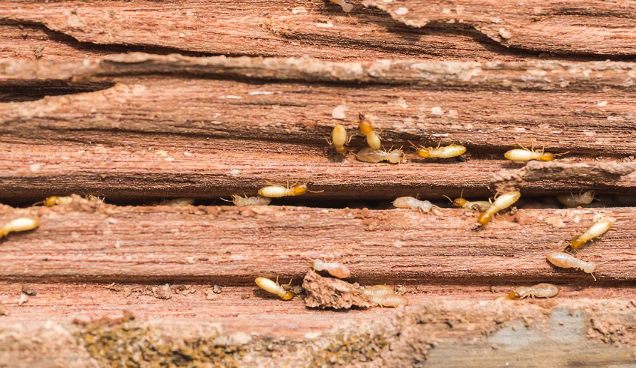 Link: No Termite
Link: No Termite
In this essential guide for homeowners, we explore in depth the strategies and preventive measures crucial to effectively protecting your home from termites. With their fearsome destructive capacity, termites can cause considerable and costly damage to your property, but with the right knowledge and action, you can minimize the risk of infestation and keep your home safe. From identifying early warning signs to adopting sustainable prevention methods and selecting the best professionals for termite control, this guide offers a comprehensive overview to ensure robust protection against these insidious pests.
What are the warning signs of termites in the home?
The warning signs of termites in the home can be subtle but should be taken seriously to prevent serious damage. First of all, termites often leave behind traces of their presence, such as fallen termite wings near windows, doors, or windowsills. In addition, mud tunnels along foundations or exterior walls can indicate termite activity, as these insects often build these structures to protect themselves from light and air.
Then, interior signs include hollow noises coming from walls or floors when you tap on them, doors or windows that become difficult to open or close, and unusual cracks or deformations in the wood of the structure. It’s crucial to keep a close eye on these signs and take preventive action as soon as they’re identified, to avoid more serious damage in the long term.
How can you prevent termite infestations on your property?
Preventing termite infestations on your property requires a proactive approach and several preventive measures. First, make sure you maintain a dry environment around your home by repairing any water leaks, keeping gutters clean, and ensuring that water drains properly away from the foundation. Then, limit the contact of wood with the ground by spacing the wooden elements of the foundation and using physical barriers such as screens or termite barriers during construction. In addition, store firewood and building materials away from the house and elevate them if possible to reduce potential entry points for termites.
In addition, carry out regular inspections of your property to spot any signs of early infestation, and carefully seal all cracks and crevices in foundations, walls, and floors to prevent termite access. Finally, consider preventive treatments such as applying anti-termite chemicals or installing baiting systems to create a protective barrier around your home. By combining these preventive strategies, you can significantly reduce the risk of termite infestation and effectively protect your property.
What are the natural methods for keeping termites out of your home?
Several natural methods can help keep termites out of your home in a non-toxic, environmentally friendly way. Using well-drained soil to reduce humidity, applying diatomaceous earth around foundations to create a physical barrier, and introducing termite-predatory nematodes into the soil to control populations biologically are effective strategies. In addition, using essential oils such as neem or citronella oil can repel termites, as can installing repellent plants such as mint, rosemary, or basil around the house. By combining these natural approaches, you can create a termite-unfriendly environment while preserving the health of your home and the environment.
What are the steps involved in inspecting your home for termites?
To effectively inspect your home for termites, start by carefully examining the exterior of your property for any signs of infestation, including mud tunnels along the foundation, fallen termite wings, and damaged wood. Next, inspect the interior of your home, focusing your attention on areas where wood is in contact with the ground, such as foundations, complaints, and framing.
What are the potential health hazards associated with termites?
Termites themselves generally pose no direct danger to human health, as they do not carry diseases or bite humans. However, the structural damage they can cause to a home can pose indirect health risks. Termite infestations can weaken wooden structures, leading to accidents such as ceiling or floor collapses. In addition, the presence of termites can promote mold growth in damaged areas, which can aggravate respiratory problems in susceptible individuals. In addition, chemical treatments used to eliminate termites can present health risks if not properly applied or ventilated. It is therefore important to take preventive measures to avoid termite infestations and to use qualified professionals to treat existing problems safely and effectively.
How do you choose the right professional to remove termites from your home?
To choose the right professional to remove termites from your home, start by researching companies that specialize in treating termite infestations, making sure they are licensed, insured, and have proven experience in the field. Ask for recommendations from friends, family, or neighbors who have had positive experiences with pest control companies. When contacting potential companies, ask about their treatment methods, work guarantee, and follow-up policy. Also, make sure the company performs a thorough inspection of your home before recommending a specific treatment plan, and be wary of overly enticing offers or pressure for quick sales. Finally, compare quotes from several companies to get a fair idea of the cost and services included, and choose the one that offers the best value for money and a professional, transparent approach.
Which building materials are most resistant to termites?
The most termite-resistant building materials are generally those that are not wood-based, as termites feed primarily on the cellulose present in wood. Termite-resistant building options include composite materials.
By R.Princy
Termite Shop: https://ca.notermite.net/
